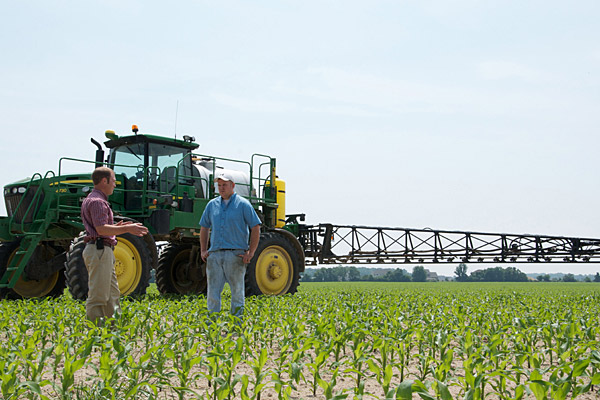


Irrigation station
UD helps farmers manage irrigation based on Delaware-specific environmental data
9:22 a.m., July 6, 2012--Watering corn, cantaloupes and other crops with industrial-sized sprinklers can be costly for farmers, but so can be fields parched by dry, hot weather. University of Delaware researchers are helping growers find the right balance between irrigation and rainfall with new online software that incorporates Delaware-specific environmental data.
“Our goal is to make the best available information that farmers need easily accessible,” said Kevin Brinson of the College of Earth, Ocean, and Environment’s Delaware Environmental Observing System, who developed the tool with assistance from College of Agriculture and Natural Resources Deputy Dean Tom Sims and associate scientist James Adkins.
Research Stories
Chronic wounds
Prof. Heck's legacy
The recently launched Delaware Irrigation Management System (DIMS) lets farmers enter information about their crops that is then combined with weather station feeds and physical data from the environment, such as soil composition, to calculate how much water is available underground to plant roots. The system is designed for several irrigated crops in Delaware: corn, soybeans, sweet corn, cucumbers, watermelons, cantaloupes, lima beans and peas.
DIMS is the only irrigation scheduling application written specifically for Delaware with automatically updated weather data. The free software provides a straightforward interface that allows users to quickly determine if a field has enough moisture – and make immediate irrigation decisions.
“Results include increased yields, which lead to higher profits; there’s improved water quality resulting from efficient utilization of nutrients; and also water conservation, which reduces water waste and can lower operating costs,” said State Conservationist Russell Morgan of the U.S. Department of Agriculture Natural Resources Conservation Service, which funded the project with additional support from the Delaware Department of Natural Resources and Environmental Control.
DIMS uses the “checkbook” method based on a basic water balance. The amount of water evaporated from the soil surface plus the amount of water used by the crop is calculated and compared to data from rainfall, soil moisture measurements and irrigation to determine the amount of water available in the soil to a particular crop.
With the price of corn predicted to go up because of drought conditions in the Midwest, such careful calculations of water use could really pay off by the end of the season for the roughly 25 percent of Delaware’s cropland that is irrigated.
“The impact is real,” Brinson said. “This hits at farmers’ wallets.”
Additional details are available online and can be downloaded in PDF format.
To setup an account to use DIMS or for more information, contact Brinson at 302-831-6906 or kbrinson@udel.edu.
Article by Teresa Messmore, with material adapted from the USDA Natural Resources Conservation Service
Photos by Danielle Quigley and Evan Krape









